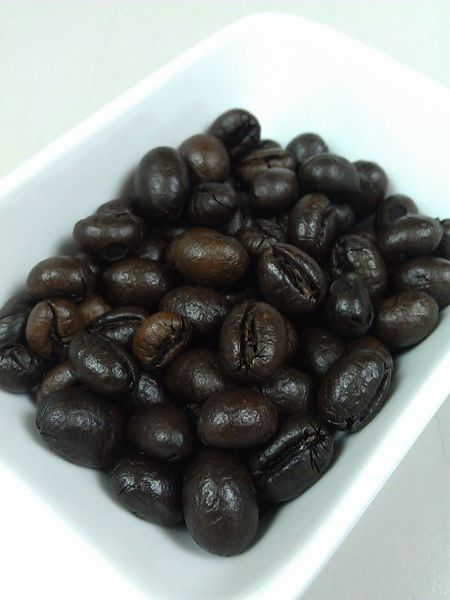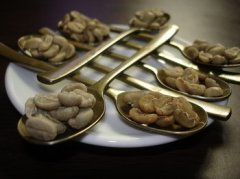Why is there oil on the surface of roasted coffee beans? "interpreting the Secrets of Coffee with Science"
For professional baristas, please follow the coffee workshop (Wechat official account cafe_style)
Coffee beans look shiny on the surface, which comes from the lipids contained in the beans themselves. Arabica coffee beans contain nearly twice as many lipids as Congolese coffee beans, so Arabica seeds are more likely to produce oil if they are roasted at the same degree. The special emphasis on "the same baking degree" is that the way of oil production is also affected by the way of baking.
The oil contained in coffee beans is squeezed to the surface by carbon dioxide produced during baking. The deeper the baking, the more carbon dioxide. As a result, all the oil from the deep-roasted coffee beans has seeped out during the baking process. The oil that seeps out after baking for a while is pushed out when the remaining carbon dioxide in the baked beans is discharged. Coffee beans continue to emit carbon dioxide for a month after baking, especially in the first few days of baking, so on most occasions it is possible to judge why coffee beans produce oil in those days.

Some people like and some people don't like the oil oozing from coffee beans.
So, is it possible that some of the raw beans baked with the same baking degree produce oil and some do not?
This can be done through some manual control methods. For example, when roasted with strong firepower, coffee beans quickly produce carbon dioxide, causing intense bursts.
Coffee beans made by this roasting method usually produce oil easily. On the contrary, coffee beans baked at low temperature and slowly produce carbon dioxide and burst more slowly, so roasted coffee beans are not easy to produce oil. So we can also speculate the way of roasting from the oil production of coffee beans.
Important Notice :
前街咖啡 FrontStreet Coffee has moved to new addredd:
FrontStreet Coffee Address: 315,Donghua East Road,GuangZhou
Tel:020 38364473
- Prev

What are the naming rules for commercial comprehensive coffee names? -"Scientific interpretation of the Secrets of Coffee"
Professional barista communication Please pay attention to the coffee workshop (Wechat official account cafe_style) the product name is an important basis for consumers to judge when buying, if it causes misunderstanding, it will cause great problems. When using a trade name, we must first investigate whether there is any infringement on other people's trademark rights. And, according to the fair competition regulations on the labelling of general concentration coffee and instant coffee
- Next

Know the varieties of Arabica coffee and the varieties evolved from Arabica
For professional baristas, please pay attention to the information of "coffee varieties" in the coffee workshop (Wechat official account cafe_style), which is not easy to be noticed by coffee users in the early days, and it is often the roasters or players who are slightly concerned about it, but they are not too deep and persistent, because the former is concerned with price and sales channels, while the latter focuses on the improvement of baking skills.
Related
- Beginners will see the "Coffee pull flower" guide!
- What is the difference between ice blog purified milk and ordinary milk coffee?
- Why is the Philippines the largest producer of crops in Liberia?
- For coffee extraction, should the fine powder be retained?
- How does extracted espresso fill pressed powder? How much strength does it take to press the powder?
- How to make jasmine cold extract coffee? Is the jasmine + latte good?
- Will this little toy really make the coffee taste better? How does Lily Drip affect coffee extraction?
- Will the action of slapping the filter cup also affect coffee extraction?
- What's the difference between powder-to-water ratio and powder-to-liquid ratio?
- What is the Ethiopian local species? What does it have to do with Heirloom native species?

